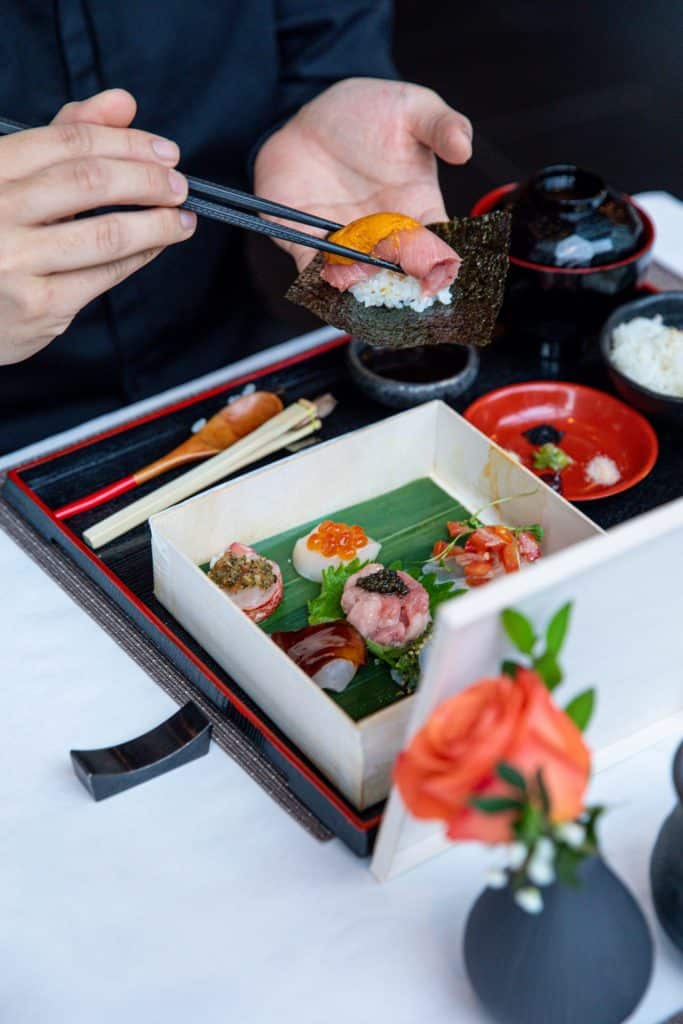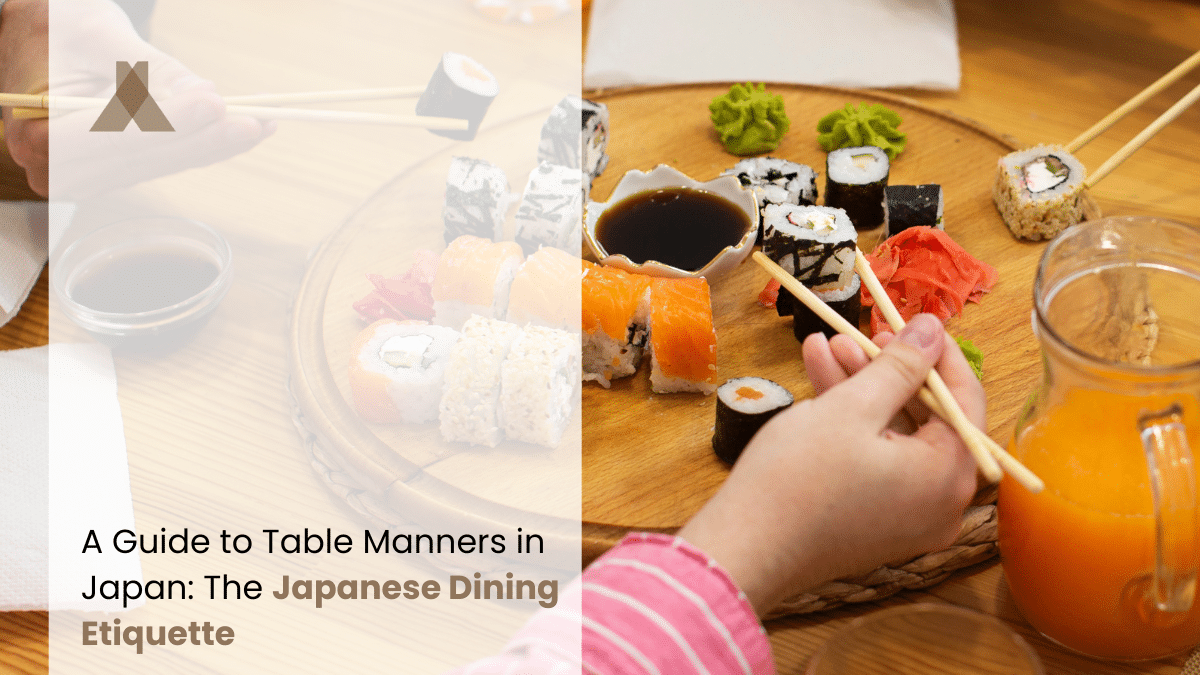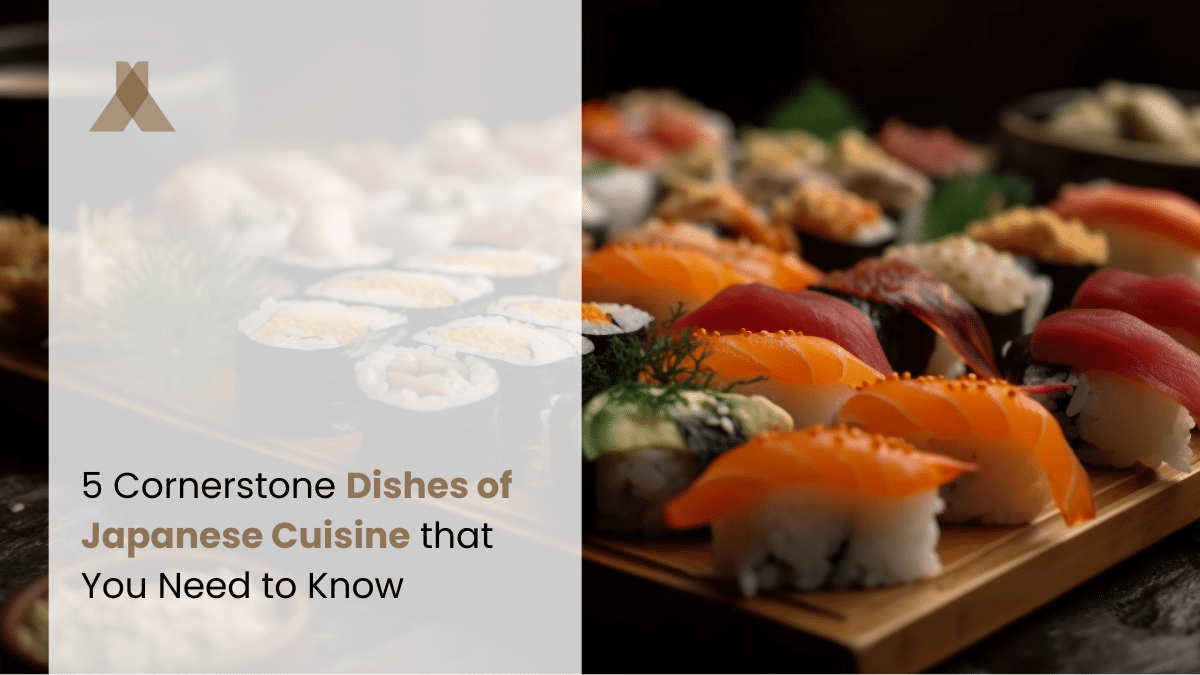Japan, undoubtedly, has an exquisite cuisine and the way meals are conducted in this country reflects centuries of custom and respect for food, the hosts, and fellow diners.
Let us explore the essential aspects of Japanese dining etiquette and important table manners that every visitor should be aware of in order to showcase their respect for the culture.

Japanese Dining Etiquette: Why Is It so Important?
Japanese dining etiquette is rooted in cultural values and societal norms that emphasize respect, mindfulness, and gratitude:
- Respect for Food and Resources: Japan has historically valued resourcefulness and sustainability due to its limited land and natural resources. For instance, finishing your meal aligns with this value by demonstrating respect for the effort that went into producing the food and minimizing unnecessary waste.
- Expressing Gratitude: Japanese dining etiquette, such as saying “itadakimasu” before a meal, are ways of expressing gratitude. You acknowledge the generosity of the host or chef and show appreciation for the meal provided.
- Social Harmony: In Japanese society, conforming to established norms and showing consideration for others are highly valued. Thus, by adhering to dining etiquette, individuals contribute to social harmony.
- Cultural Tradition: Dining customs in Japan are often passed down through generations. Hence, embracing these etiquettes shows respect for the culture and helps preserve Japanese heritage.
Essential Aspects of Japanese Dining Etiquette
Seating Arrangement
In traditional Japanese dining settings like a tatami room or formal restaurant, seating arrangements often follow a hierarchical order.
The most honored guest or the eldest person is typically seated furthest from the entrance.
A hot towel called oshibori may be provided to clean your hands before eating. Use it to clean your hands only (do not use it to wipe your face or any other part of your body).
Saying Grace
Before the meal, it’s customary to say “itadakimasu” (which means “I gratefully receive”) to express appreciation for the food and those who prepared it.
After the meal, saying “gochisousama deshita” (thank you for the meal) is polite and shows gratitude.
Use of Chopsticks
Do not stab your food with the chopsticks and avoid passing food from your chopsticks to someone else’s plate. Passing food directly from one set of chopsticks to another (called “hashi-watashi”) is reminiscent of passing bones at a funeral and is considered impolite. Use the other end of your chopsticks or serving chopsticks for shared dishes.
Also, avoid sticking chopsticks upright into rice, as this resembles a funeral ritual in Japan (a bowl of rice is prepared for the deceased with chopsticks standing vertically upright in it).
Do not use your chopsticks for gestures—pointing or waving them around is considered rude. Do not rest them on your bowl or plate either but place them on a chopstick rest.
Slurping Noodles
Unlike in Western cultures, it is totally acceptable and even appreciated to slurp noodles like ramen or soba—it is a sign of enjoyment and indicates the food is hot and delicious.
Handling Dishes
Many dishes are meant to be shared, so you can take moderate portions from communal plates. However, do not move dishes or bowls around unnecessarily.
Keep communal dishes in their place and avoid touching other people’s plates or bowls.
Eating Sushi
When eating sushi, use your hands instead of chopsticks if it is a piece that is difficult to handle with them, like nigiri sushi.
Dip sushi fish-side down into soy sauce to preserve the rice’s flavor.
Pouring Drinks
If you are pouring drinks for others, it is customary to pour for others first before refilling your own glass.
Hold the bottle or teapot with both hands when pouring.
Finishing the Meal
Finishing all the rice served to you is considered a sign of good manners, aligning with the principle of avoiding waste, known as “mottainai.” This term conveys a sense of regret over unnecessary waste and can be translated to English as “What a waste!”.
While it’s acceptable to leave a small portion of food if you genuinely do not enjoy it, excessive waste should be avoided out of respect for the meal and those who prepared it. Leaving food behind, especially a significant amount, can be viewed as disrespectful in Japanese culture, as it implies a lack of appreciation for the food and efforts involved in its preparation.
Conversation at the Table
Avoid loud conversation, especially in formal settings as you should be mindful of others and maintain a respectful tone during mealtime.
Noise
Blowing your nose, burping, or loudly chewing are considered impolite, just like in the Western culture.
Tipping
Unlike in some Western countries, tipping is not practiced in Japan.
Exceptional service is already included in the price or can be expressed with a simple “arigatou”(thank you).
Respecting Dietary Customs
Since Japanese cuisine often includes ingredients like fish stock (dashi) or soy sauce, you should inform your host or the restaurant in advance If you have any dietary restrictions.
Dining with Grace: The Art of Japanese dining etiquette
Japanese dining etiquette embodies core cultural values, fosters gratitude and respect, contributes to social cohesion, preserves tradition, and enriches the dining experience for all participants.
We invite you to practice these etiquettes in order to engage more deeply with Japanese culture. You can do so by visiting us at our japanese special events in Atlanta.





